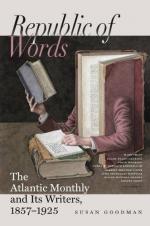The defect of this view is not that it is too ideal, but that it is not ideal enough. It is an incomplete idealism that through weakness of faith does not hold fast its own point of view, and so does not dispose of matter, but leaves it outside, as negation, obstacle. The body is allowed to exist, but remains in disgrace and reduced to the barest indication. But it is honoring matter far too much to allow that it can be an obstacle. It is no obstacle, for it is nothing of itself. Rightly understood, this contempt of the body is directed only against the false emphasis placed upon single aspects or manifestations. It is a feeling that the true ideal is not thus shut up in a forced exception, as if it were the subtilized product of a distillation whereby the earthly is to be purged of its dross; but that it is the all-pervading reality, which the finite can neither hinder nor help, but only obey, which death and corruption praise, which establishes itself through imperfection and transience.
Gibbon, speaking of the Iconoclasts, says,—“The Olympian Jove, created by the muse of Homer and the chisel of Phidias, might inspire a philosophic mind with momentary devotion; but these Catholic images were faintly and flatly delineated by monkish artists in the last degeneracy of taste and genius.” Such comparisons mistake the point. These are not parallel attempts, but opposed from the outset. The “Catholic image” was a declaration that the problem cannot be solved in that way. An early legend relates, that a painter, undertaking to copy his Christ from a statue of Jove, had his hand suddenly withered. The attempt is accused because of the pretence it makes to coordinate body and spirit, Nature and God,—as if one configuration of matter were more godlike than another. The figure of the god claims to complete what Nature has partly done. But now the world is seen to be not merely the product of Mind working upon Matter, but the Creation of God out of nothing,—thus altogether His, in one part as much as in another. The only conceivable separateness, antagonism, is that of the sinful Will, setting itself up in its vanity; this it must be that arrogates to itself the ability to represent its Creator.
The Christian image is without form or comeliness,—rejects all outward graces, seemingly glories in abasement and deformity, fearing only to attribute to Matter some value of its own.
Henceforth the connection is no longer at arm’s-length, as of the workman and the material. Resistance to limitation is changed into joyful acceptance; for it is not in the limitation, but in the resistance, that the misery of earth consists. The quarrel with imperfection is over. The finite shall neither fortify itself in its finiteness, nor seek to abolish it, but only make it the willing instrument of universal ends. Thus the true self first exists, and no longer needs to be extenuated or apologised for.




